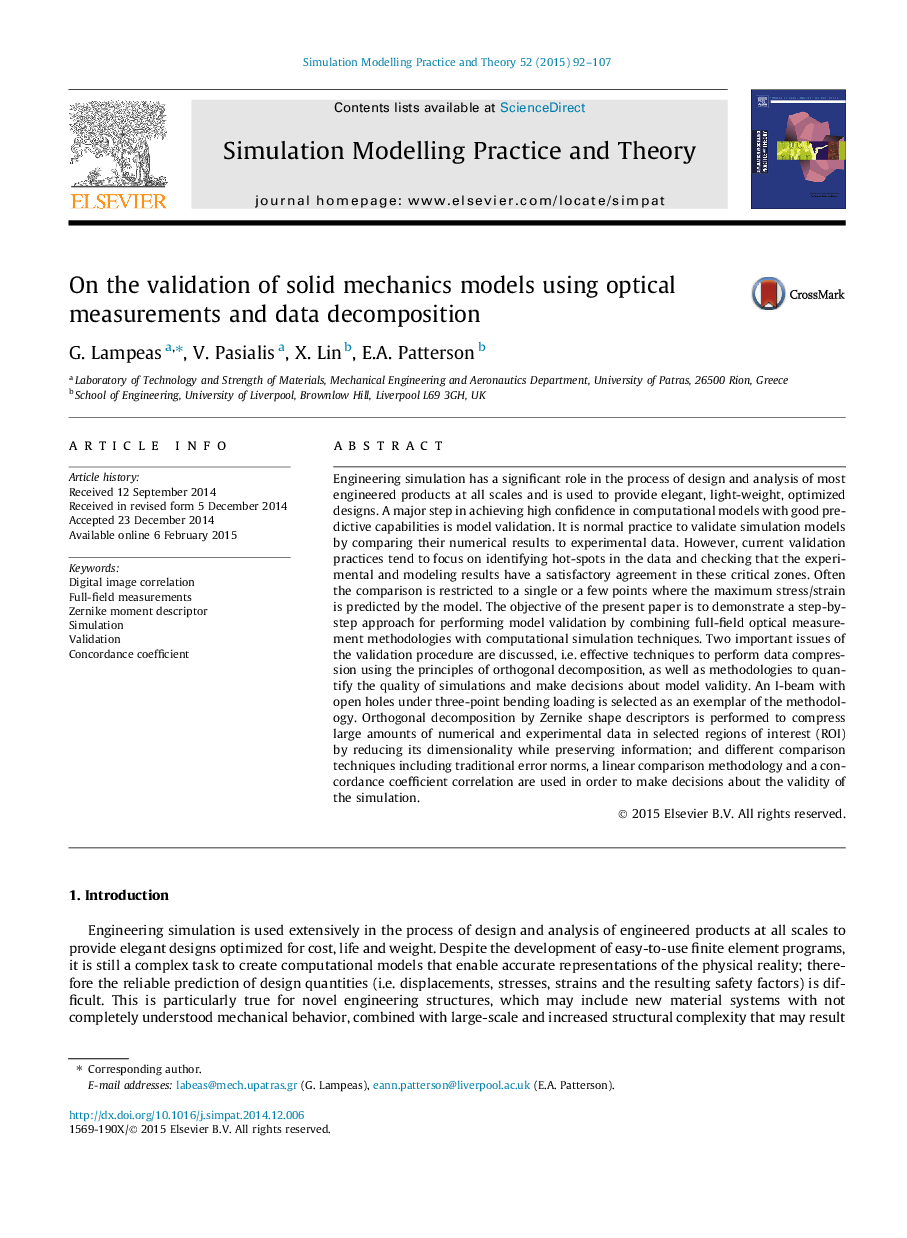| کد مقاله | کد نشریه | سال انتشار | مقاله انگلیسی | نسخه تمام متن |
|---|---|---|---|---|
| 492454 | 721576 | 2015 | 16 صفحه PDF | دانلود رایگان |
• Orthogonal decomposition used in the quantitative comparison of data-rich full-fields from simulation and experiment.
• Successful data compression by Zernike moments.
• A linear comparison approach was applied to a patchwork of sub-regions, as well as to the entire region of the structure.
• The concordance coefficient was used as an estimate of the quality of the simulation model predictions.
Engineering simulation has a significant role in the process of design and analysis of most engineered products at all scales and is used to provide elegant, light-weight, optimized designs. A major step in achieving high confidence in computational models with good predictive capabilities is model validation. It is normal practice to validate simulation models by comparing their numerical results to experimental data. However, current validation practices tend to focus on identifying hot-spots in the data and checking that the experimental and modeling results have a satisfactory agreement in these critical zones. Often the comparison is restricted to a single or a few points where the maximum stress/strain is predicted by the model. The objective of the present paper is to demonstrate a step-by-step approach for performing model validation by combining full-field optical measurement methodologies with computational simulation techniques. Two important issues of the validation procedure are discussed, i.e. effective techniques to perform data compression using the principles of orthogonal decomposition, as well as methodologies to quantify the quality of simulations and make decisions about model validity. An I-beam with open holes under three-point bending loading is selected as an exemplar of the methodology. Orthogonal decomposition by Zernike shape descriptors is performed to compress large amounts of numerical and experimental data in selected regions of interest (ROI) by reducing its dimensionality while preserving information; and different comparison techniques including traditional error norms, a linear comparison methodology and a concordance coefficient correlation are used in order to make decisions about the validity of the simulation.
Journal: Simulation Modelling Practice and Theory - Volume 52, March 2015, Pages 92–107
